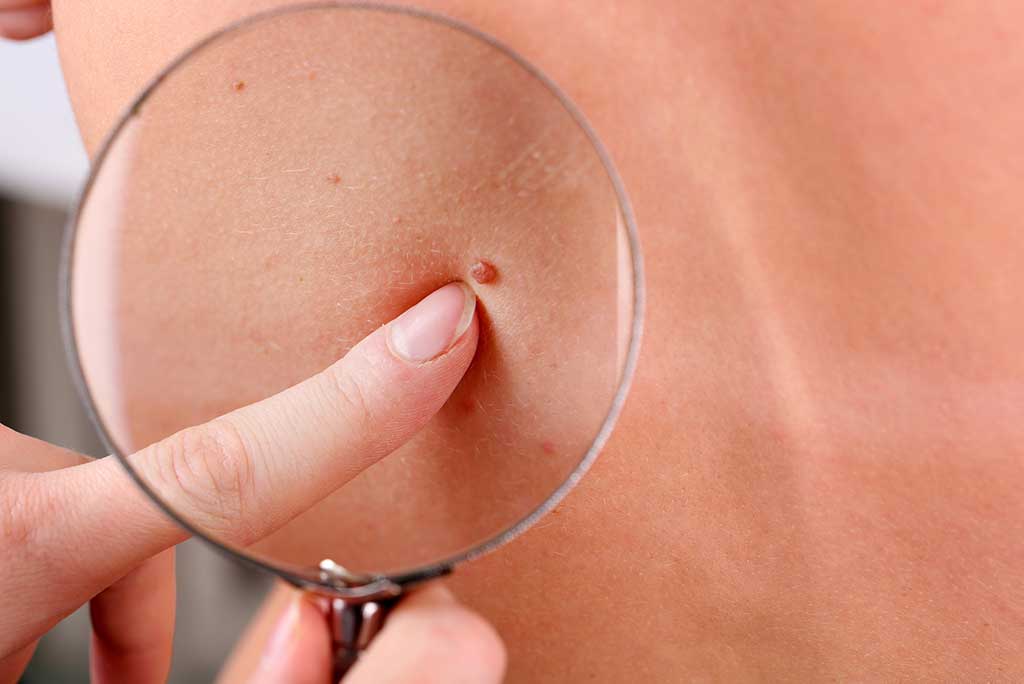Moles & Skin Tags
Book a consultation
Moles (nevi) are common growths, are usually brown or tan, and can be flat or elevated. They vary in shape, size, location and depth, and the best removal method depends on these characteristics.
Skin tags are benign, fleshy growths that are usually brown or tan, and frequently occurs in folds like the neck, underarms, below the breast and the groin.
Seborrheic keratoses (aka senile wart, age wart, granny wart, age spot), occur with aging, and are benign, warty-looking, rough raised lesions. They can be brown, gray, black, or yellow and occur anywhere.
Sun Spots (aka liver spot, lentigines, age spot) are benign, tan or brown flat lesions. They occur on sun exposed areas like the face, back of hands and chest.
What we can do
Dr. O’Neill will first assess and identify the type of lesion.
Cosmetic removal of benign lesions at our Mississauga clinic may include:
- Liquid nitrogen
- Electrodessication
- Shave excision
- Elipse excision with stitches
- lPL
Mole Removal
A mole is a common benign skin growth, comprised of pigment making cells called melanocytes. Moles may start appearing in the first year of life, and you may grow new moles until you reach your 40s. The number of moles you develop depends on:
- Genetics
- Sun exposure
- Number of sunburns you had
Dr. O’Neill encourages you to check your moles. You should be on the lookout for the ABCDEs of a bad mole:
- A is for Asymmetry (one half of the mole doesn’t look like the other side)
- B is for Border (bad moles have an irregular or jagged border)
- C is for Colour (bad moles are often black, or multi-coloured)
- D is for Diameter (bad moles are often 6mm or greater in diameter)
- E is for Evolution (bad moles are increasing in size unlike your other moles)
You may wish to remove a mole for cosmetic reasons. A mole can interfere with clothing or jewellery, get in the way of shaving, or be unsightly. In Ontario, removal of a benign mole is not covered by OHIP.
Dr. O’Neill will assess your mole and determine the best method of removal. Mole removal is a surgical procedure, performed at O’Neill Cosmetic Dermatology in Mississauga. Dr. O’Neill will numb the area with anesthesia and choose one of the following:
- Surgical shave. This is used most often on smaller moles. Dr. O’Neill will use a surgical scalpel to shave off the mole and some of the tissue beneath it. Stitches are usually not required.
- Surgical excision. Dr. O’Neill will make an ellipse excision around the mole, and then suture the skin closed.
Surgical removal of a mole will leave a scar. You will be instructed on how to care for the wound to prevent infection.
Skin Tag Removal
Skin Tags are benign lesions that you may choose to remove for cosmetic reasons. Skin tags may interfere with clothing or jewellery, or get in the way of shaving. A skin tag is a small flap of flesh coloured tissue, that hangs off your skin by a thin stalk. Skin tags form most often where your skin rubs together, in folds, or where clothing rubs the skin. Common areas to grow skin tags include:
- Armpits
- Neck
- Eyelids
- Groin
- Under the breasts
Skin tags are seen in both men and women. They are more common if:
- You are overweight
- You have diabetes
- You are pregnant
Dr. O’Neill will assess your skin tags and determine the best method for removal. This may include:
- Burning known as electrodessication
- Freezing known as cryotherapy using liquid nitrogen
- Snip surgery whereby she will numb the area with anesthesia and cut off the skin tag
After it is removed, your skin tag usually will not return. However you may grow new skin tags somewhere else on your skin.
Wart Removal
Seborrheic keratoses are benign, warty growths that are derived from keratinocytes. They can be brown, black, gray, tan, pink or skin colored. The cause of seborrheic keratoses is unknown, but they seem to be age related as they are more common as we get older. They are known as age warts or senile warts because of their rough surface texture. They are not contagious like the viral warts children and teenagers acquire on the hands and feet.
Seborrheic keratoses are harmless, but they can be unsightly and interfere with clothing or jewellery. You may wish to remove these warty lesions for cosmetic reasons.
Dr. O’Neill will assess your seborrheic keratoses at our Mississauga clinic. She will discuss the following options for removing your benign age warts:
- Cryotherapy. The application of liquid nitrogen produces extreme cold to destroy the wart. This is best suited for smaller seborrheic keratoses.
- Surgical removal. Curettage, shave excision or ellipse excision with sutures may be used.
- Electrodessication. An electric needle is used to burn off small seborrheic keratoses.
We know skin! We can’t wait to help you achieve beautiful, healthy looking skin.

Get In Touch
Dr. Karen O'Neill, FRCPC
Cosmetic Dermatologist
2145 Dunwin Drive, Unit 6
Mississauga ON, L5L 4L9
Do you have questions? I have answers! Fill in the form and submit.
All information is kept confidential.
